How the FBI solved the mystery of the severed head of a 4,000-year-old mummy
By Pictolic https://pictolic.com/article/how-the-fbi-solved-the-mystery-of-the-severed-head-of-a-4000-year-old-mummy.htmlIn 1915, a group of American archaeologists discovered the ancient Egyptian necropolis of Deir el-Bersha and the entrance to a hidden tomb. Inside the cramped limestone room, they saw a terrible sight — the severed head of a mummy lay on a cedar sarcophagus.
The room, which the researchers designated as "tomb 10A", was the resting place of the Egyptian nomarch Jehutinakht and his wife. At some point during 4 thousand years of their "sleep" robbers visited the tomb and stole gold and jewelry. The robbers threw the mummy's torso into a corner and tried to set fire to the tomb to cover their tracks.
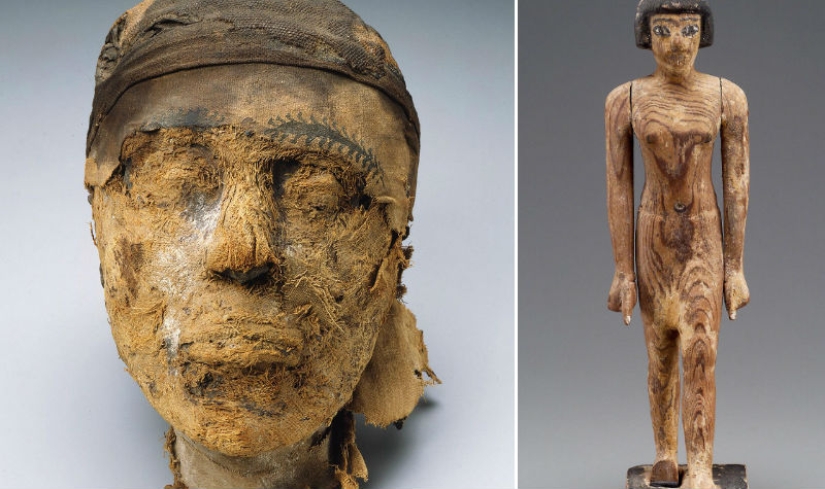
Archaeologists who discovered the looted tomb sent the sarcophagi and wooden sculptures preserved after the raid to the Museum of Fine Arts in Boston in 1921. Most of the collection remained in storage until 2009, when they were not exhibited. Although the mummy's torso remained in Egypt, the severed head became the highlight of the exhibition in the USA. She attracted the attention of visitors, she was surrounded by mystery. "The head was found on the sarcophagus of the nomarch, but it is not known who it belongs to, the ruler or his wife," said museum curator Rita Fried. And then it was decided to conduct a DNA test.
"The problem is that until 2009, no successful extraction of a DNA sample from a 4,000-year-old mummy was known."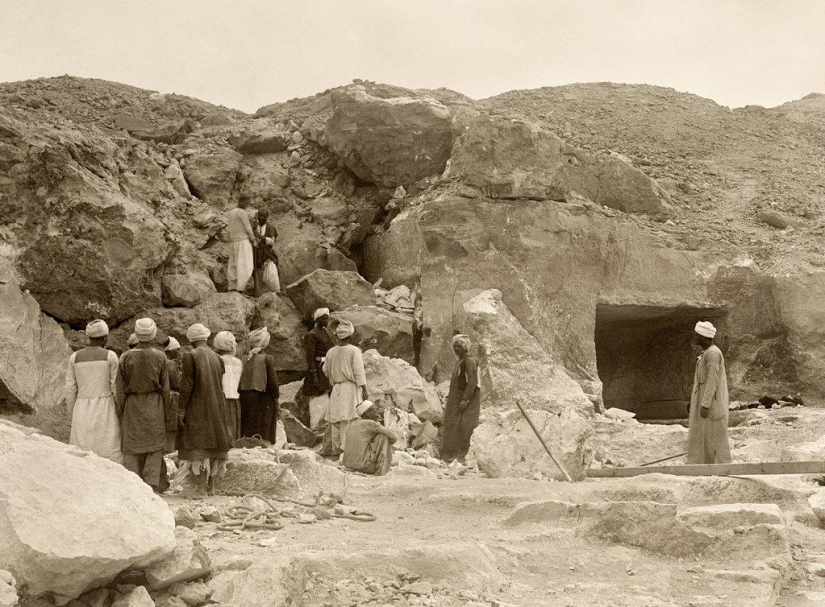 Expedition at the entrance to Tomb 10A, 1915
Expedition at the entrance to Tomb 10A, 1915
The Egyptian climate is rapidly destroying DNA. Therefore, the museum turned to the FBI to solve the mystery.
The Federal Bureau of Investigation has never conducted an examination of such an ancient sample. The successful extraction of genetic material from an ancient mummy could add a new technique to the arsenal of criminologists and decipher the past of other ancient remains.
"To be honest, I didn't expect it to work, because at that time it was considered impossible," said Odile Loreille, an FBI forensic medical examiner.
Researchers believe that nomarch Jehutinakht and his wife lived around 2000 BC during the Middle Kingdom in Ancient Egypt. Although the walls of the tomb were bare, the sarcophagi of the ancient rulers were decorated with beautiful hieroglyphs and images of their afterlife.
The group of people who looted the tomb was led by American archaeologists George Reisner and Hanford Story. They used dynamite to get inside the burial.
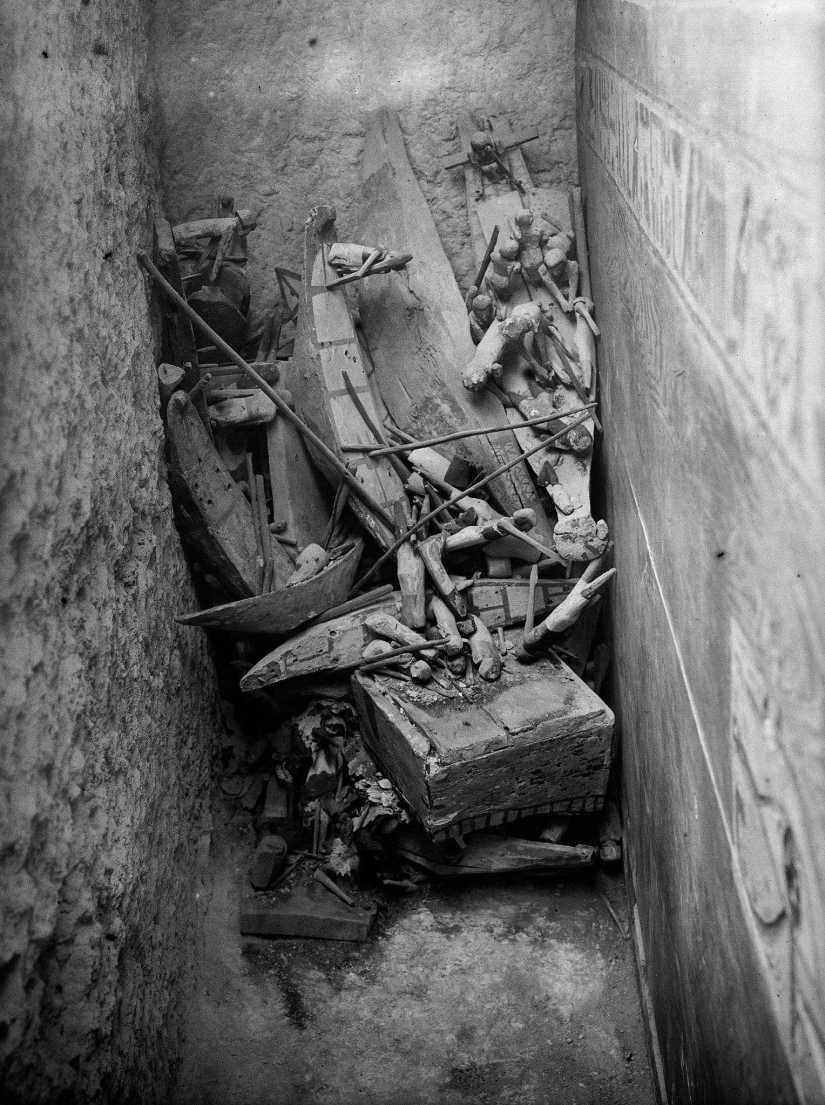
During the preparation for the exhibition in 2005, computer tomography revealed that the mysterious mummy's head was missing cheeks and part of the jaw. A new question arose, where did the deceased have such deviations. Researchers have suggested that this could be a consequence of an ancient ritual, also known as the "Open Mouth Ceremony". It was carried out so that the deceased could eat, drink and breathe in the afterlife.
Still, who the head belonged to remained unknown.
Doctors and museum staff realized that it was better to extract DNA from the molars of a mummy, because they often act as small time capsules that can tell about a person's genetic past.
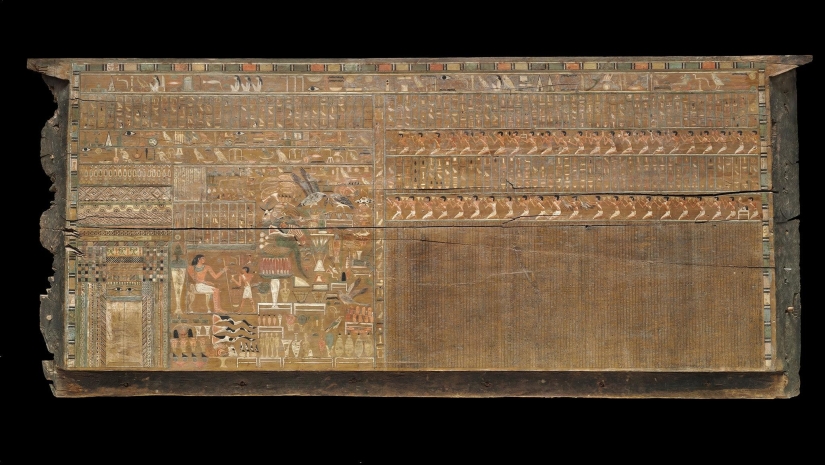 Decorated sarcophagus lid
Decorated sarcophagus lid
Scientists inserted a wired camera into the neck hole of the severed head. The first tooth, which they reached, did not give in, the second one came off instantly. It was a healthy and perfectly preserved tooth. For several years, a team of scientists unsuccessfully tried to extract genetic material from the tooth. And then in 2016, they turned to FBI medical examiner Odile Loreil.
Odile Loreil joined the FBI after 20 years of studying ancient DNA. She extracted genetic material from a 130,000-year-old cave bear, worked to identify the victims of the Korean War, found out the name of a two-year-old child who died on the Titanic, and proved that the In the Urals, the remains belong to two Romanov children (but could not confirm whether Princess Anastasia is among them).
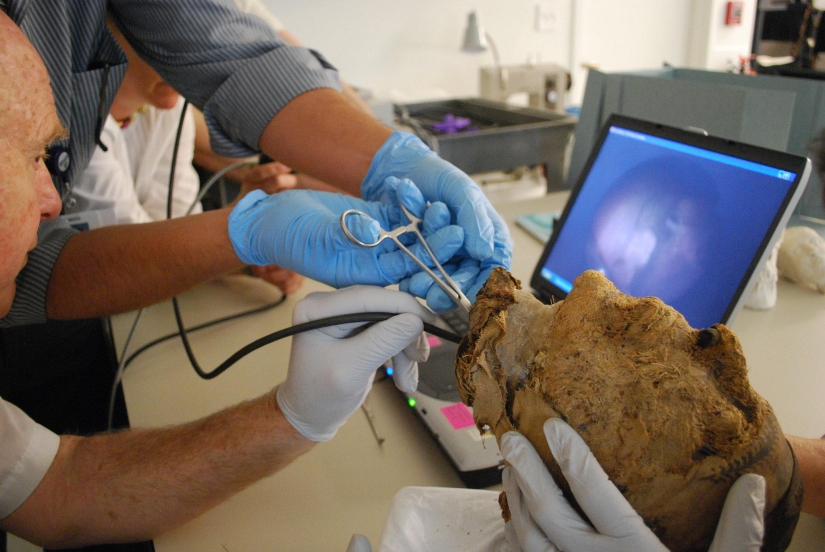 Scientists and doctors extract a tooth from a mummified head
Scientists and doctors extract a tooth from a mummified head
In the bureau's laboratory, Loreal drilled through the root of the tooth and extracted the powder particles. Then she rubbed the tooth and placed it in a DNA library for future research. She entered the tooth data into the computer and studied the structure and details of the chromosomes in the sample. When the program processed the request, a notification appeared on the screen — the tooth sample belongs to a man.
Odile Loreil proved that the mummified head belonged to Nomarch Jehutinakht. In addition, she found that DNA can be successfully extracted from ancient Egyptian mummies. "For Egyptologists, this is one of the holy Grails."Odile Loreil's research has revealed another mystery. For centuries, archaeologists and historians have struggled over the origin of the ancient Egyptians and how closely modern people living in North Africa are related to them. To the surprise of scientists, the maternal ancestor of Dzhehutinakht was a Eurasian.
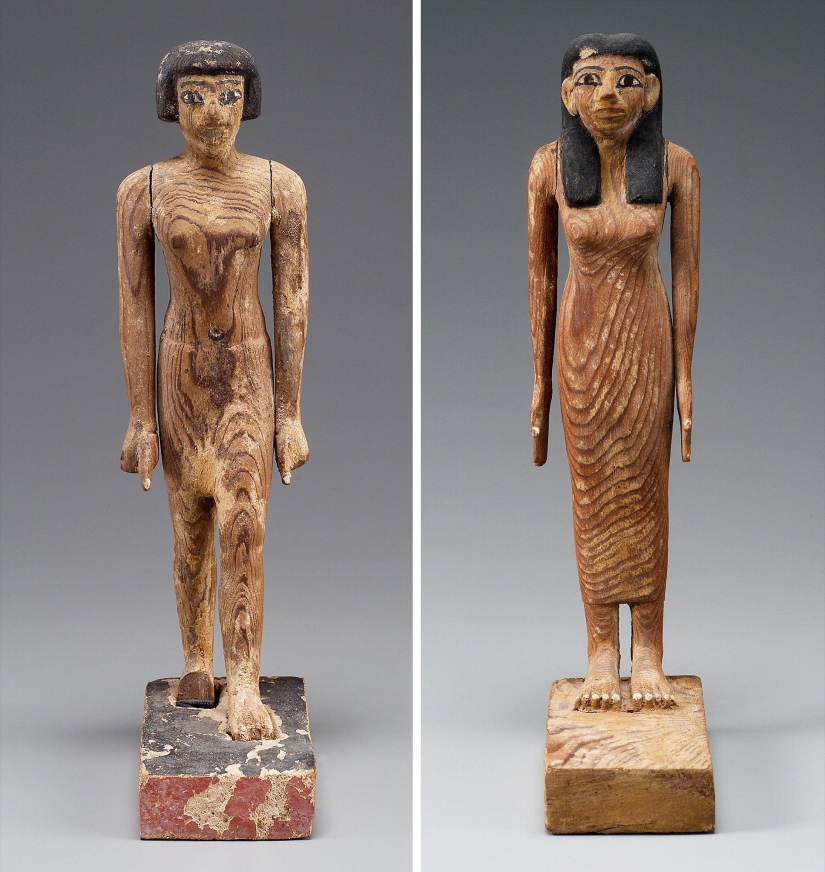 Wooden figurines of Nomarch Dzhehutinakht and his wife found in a looted tomb
Wooden figurines of Nomarch Dzhehutinakht and his wife found in a looted tomb
Loreal's achievements will allow scientists to learn more about the ancient civilization. However, they will have to work on old samples, since in 1983 the Egyptian authorities banned the export of ancient artifacts or human remains from the country. But for the staff of the Boston Museum, the main reward is that they finally found out who the head belongs to. It took them 100 years to do this. Now they can change the plate.
Keywords: Archaeology | Head | Tomb | Dna | Egypt | Research | Mummy | Scientists | Fbi
Post News ArticleRecent articles

The dream house, or just the perfect place for a vacation, is located in the Tuscan countryside. Thanks to the location, the house ...

The fall of meteorites on the surface of the Earth is not too rare. There have also been cases of people dying as a result of such ...
Related articles

After defeating the median king Arphaxad, the Assyrian king Nebuchadnezzar, who ruled in Nineveh, sent his captain Holofernes to ...

This branch of medicine as transplantation, there are more than a hundred years. Over this time there have been many successful and ...

Dozens of everyday things we mistake for the achievements of the present or recent past. Which is not surprising, because these ...

Many things, animals and plants seem familiar to us, because we have seen them a hundred times. And although it seems that a ...